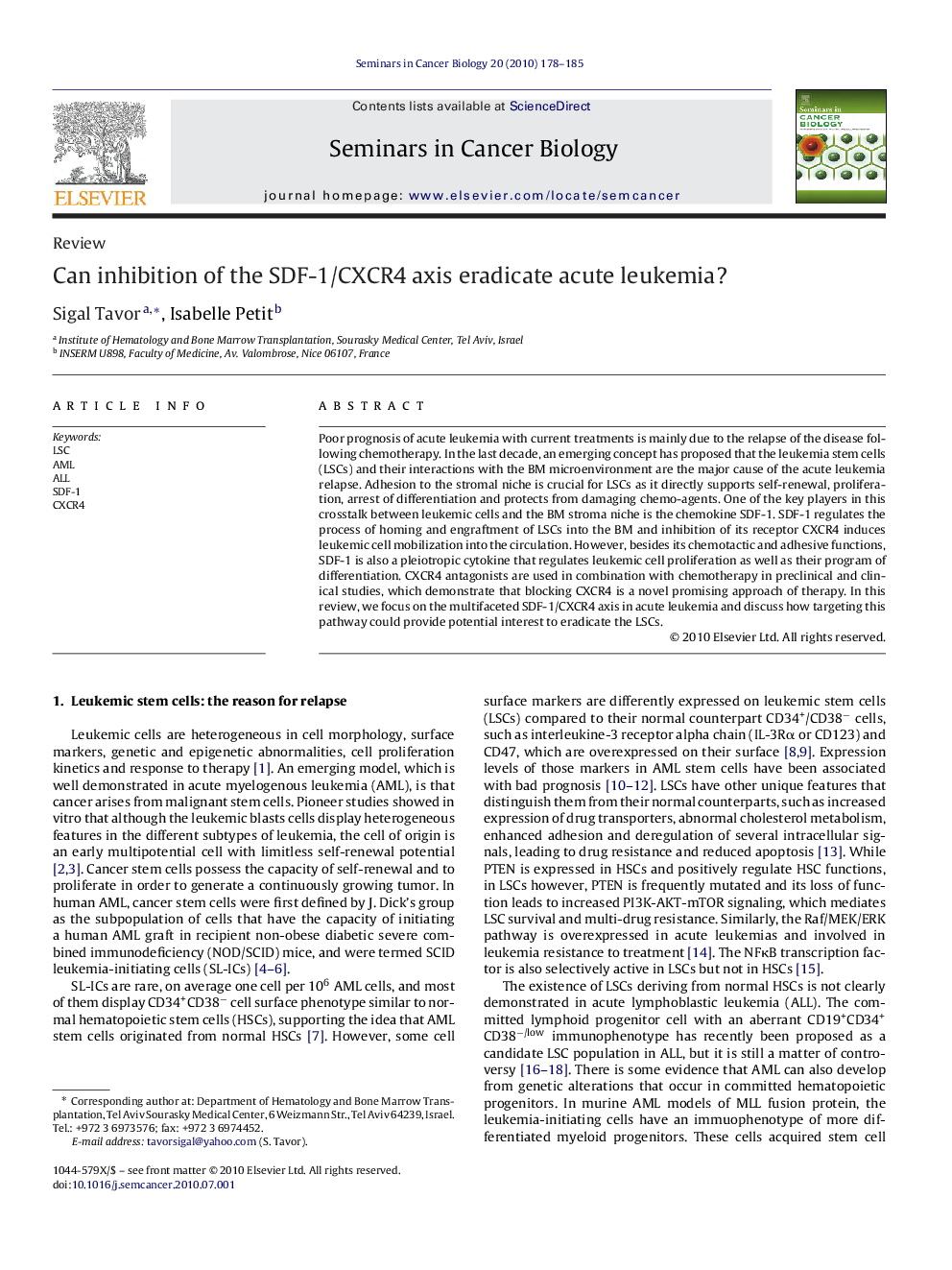| Article ID | Journal | Published Year | Pages | File Type |
|---|---|---|---|---|
| 2024157 | Seminars in Cancer Biology | 2010 | 8 Pages |
Poor prognosis of acute leukemia with current treatments is mainly due to the relapse of the disease following chemotherapy. In the last decade, an emerging concept has proposed that the leukemia stem cells (LSCs) and their interactions with the BM microenvironment are the major cause of the acute leukemia relapse. Adhesion to the stromal niche is crucial for LSCs as it directly supports self-renewal, proliferation, arrest of differentiation and protects from damaging chemo-agents. One of the key players in this crosstalk between leukemic cells and the BM stroma niche is the chemokine SDF-1. SDF-1 regulates the process of homing and engraftment of LSCs into the BM and inhibition of its receptor CXCR4 induces leukemic cell mobilization into the circulation. However, besides its chemotactic and adhesive functions, SDF-1 is also a pleiotropic cytokine that regulates leukemic cell proliferation as well as their program of differentiation. CXCR4 antagonists are used in combination with chemotherapy in preclinical and clinical studies, which demonstrate that blocking CXCR4 is a novel promising approach of therapy. In this review, we focus on the multifaceted SDF-1/CXCR4 axis in acute leukemia and discuss how targeting this pathway could provide potential interest to eradicate the LSCs.
